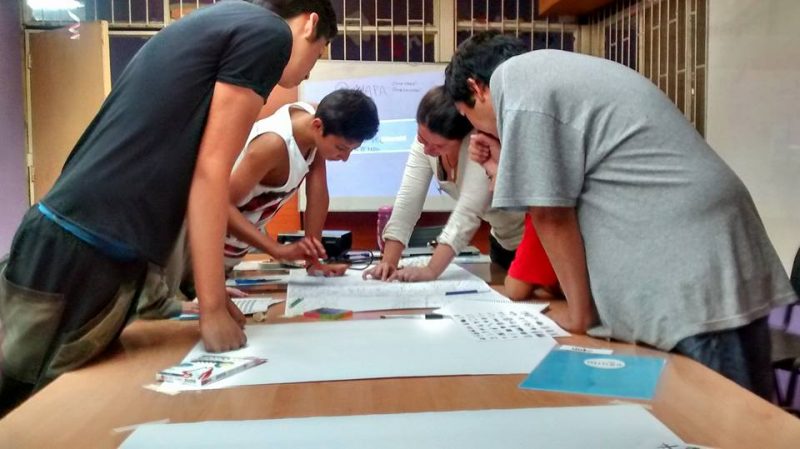Minga, a bottom-up project
Posted on November 20, 2016
Project Minga was born from the need of the pediatric Hospital Exequiel González Cortés to maintain the spirit of community of the hospital in the move to a new building. Exequiel Gonzalez Cortes Hospital opened its doors in 1962 in the southern sector of Santiago (capital of Chile), where a pediatric hospital was needed because there were too many deaths related to malnutrition in the area.
The Exequiel has a rich community, where parents organize to support each other in the difficult moments of having a sick child, but they also keep a close relation with the medical team, administratives, guards, and maintenance staff. Everyone is able to support each other in difficult moments by leaving messages in the restrooms or waiting areas, or doing craft workshops to fill the waiting hours.
Nowadays, a new hospital is being built more modern, bigger, and fresh.
Minga is in charge of moving the essence and richness of the whole variety of community interactions to the new house, because it’s really important that people keep feeling it as their own. This hospital is not only the space it occupies, it’s much more than that. It’s the public space or meeting point it offers for a community that deeply cares for their children and teenager’s health. They are the hospital.
To achieve this, we wanted to modify the interior spaces of the new building with new experiences and design interventions that facilitate the appropriation of the new building. The first stage incorporates a friendly signage system and environmental graphics in different sectors of the hospital, co-designing them with the community that will use these spaces.
The environmental graphics project was a bottom up initiative. We brought design and ethnographic tools to let the hospital community create the graphics, from which they had to choose some elements that were going to be part of the navigation system as landmarks.
These tools responded to each phase of the project. We started by explaining what the design process is and how it works, so we could be in the same page throughout the process. Then we discussed investigation and data collection tools (photography and ethnography). After this, we showed them how to visualize this information through illustration, turning their work into a graphic proposal to digitalize afterwards. We also incorporated production processes and prototyping the project, before handing it over to the builder of the hospital.

There are 17 environmental graphics to be created: 11 were designed by the teenagers from the communes from the south of the city, 2 from the administrative and medical staff of the hospital, and the other 4 from the different communities that have a strong and close participation in the hospital. These three main groups had different work modalities, but all of them had the same process of observation and understanding of their surroundings, creating a narrative based on what they observed, and reinterpreting it in an environmental graphic.
Minga is a project that keeps the user in the center always, and empowers them to create and develop what they think and feel is better for their community. And as the community continues to move along, Minga will be there to encourage healthy and supportive connections and interactions.
Amanda Astorga